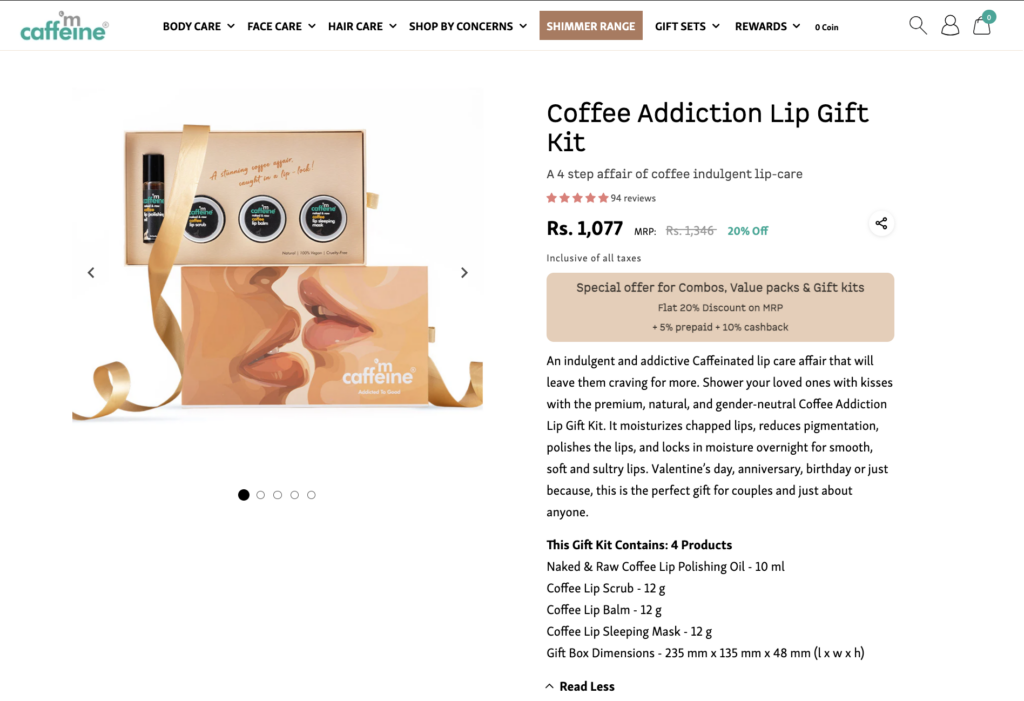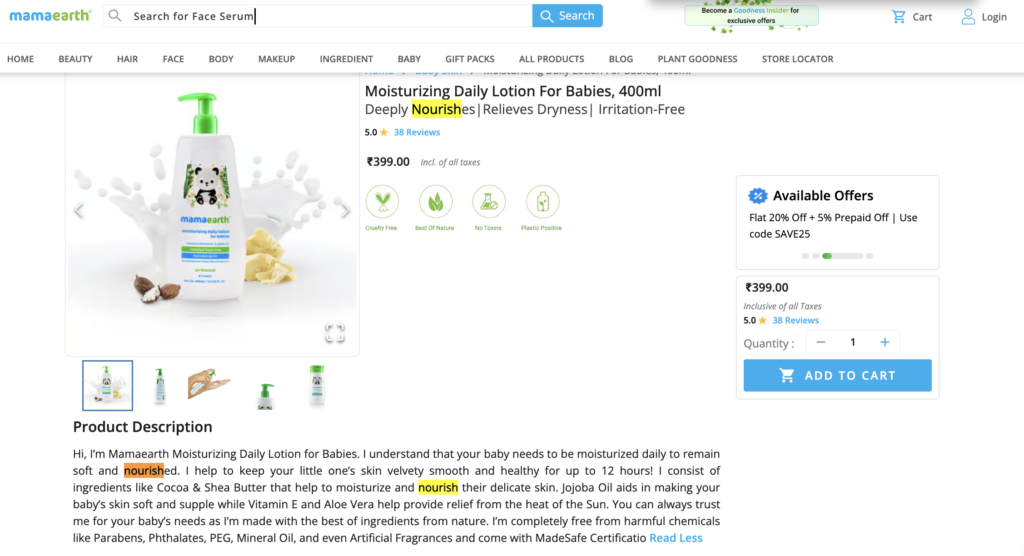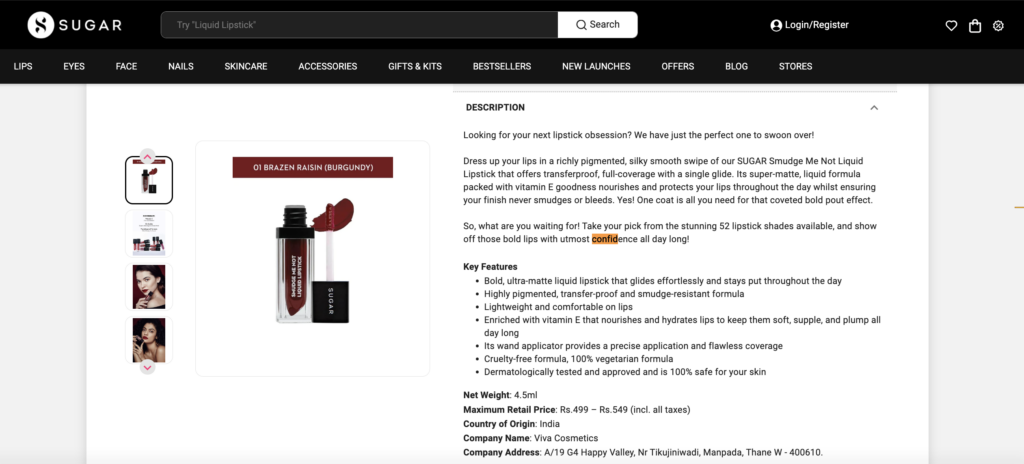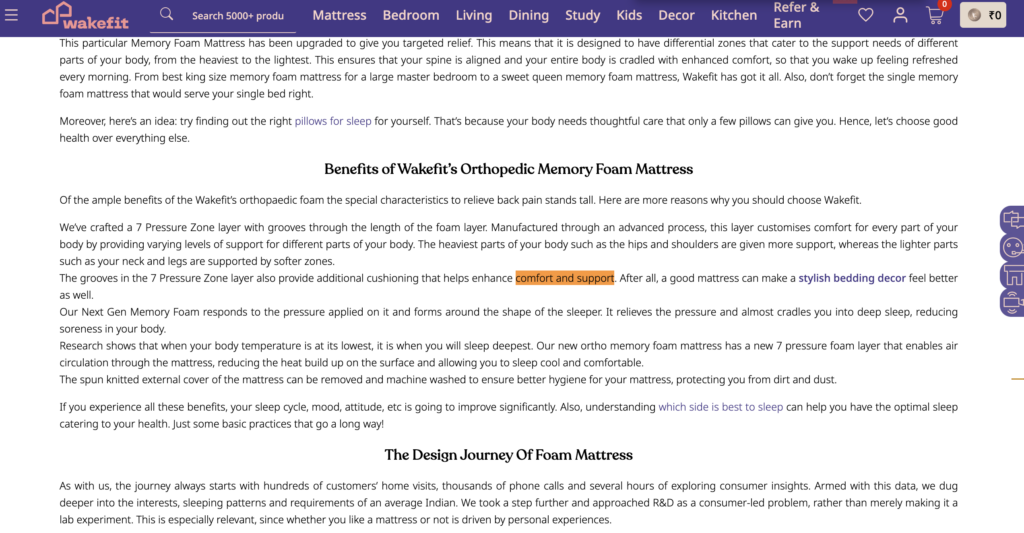How to write product description that drive sales? In the world of online selling, product descriptions are like your best sales talk. It doesn’t matter if you’re a pro or just getting started – knowing how to write these descriptions that convince people to buy is super important.
This guide is your secret weapon for creating product descriptions that really work. We’ll share tips and tricks to make your descriptions grab attention and boost your online sales. So, let’s jump right in and discover how to write descriptions that sell.
Contents
What is product description?
To understand how to write product description, firstly let’s have a look at what it is? A product description writing is a piece of copy that gives potential customers information about the product, its features, and benefits. Also, it plays the role of a salesperson- to persuade customers into buying.
As per Covertcart, a whopping 80% of shoppers engage in online research before making a purchase. This underscores the importance of infusing your product descriptions with rich detail and value.
India alone has an online shopper base of 180-190 million people, and this is growing exponentially. In an oversaturated market, you want to make sure that your product descriptions are well, doing more than just describing your product.
Gone are the days of writing descriptions that simply ramble off a bunch of features.
What should a good product description include?
A good bare minimum product description should include the materials/ingredients used in a product, the dimensions and other measurements. If you sell more than one product in a pack, mention the quantity as well. Here’s an example of a simple product description from mcaffeine:

Have you ever dropped off from buying a product because there was not enough information provided in its description?
Since your buyer can not physically touch the product, it is your responsibility to describe everything that your buyer will need to know in order to understand the product and set the expectations right.
To make your product description more comprehensive and persuasive, here are a few points to consider:
- How is the product useful for the buyer?
- How does the product function?
- What sets this product apart from the rest?
- Why should your buyer buy this product?
- What does this product go along with? (if it’s a food product – what other food does it taste great with? If it’s a clothing piece, what other clothing does it pair well with?)
Salsify, a prominent market research firm, found that over 87% of online shoppers highly prioritize product descriptions when making purchase decisions.
Tips on effective product descriptions: Learn from real brands
Crafting a product description that really sells isn’t rocket science! It’s all about using words that grab attention, showcasing what makes your product awesome, and speaking to what your customers want. Let’s dive in with some real-life examples from cool brands that will help you understand how to write product description perfectly:
1. Understand your audience
Tip: Know your target audience’s preferences and needs to craft a description that resonates with them.
Example: Mamaearth, a D2C brand known for natural and safe baby products, tailors its descriptions to appeal to parents who prioritize chemical-free skincare: “Nourish your baby’s skin with our gentle, toxin-free baby lotion, made with love.”

2. Use descriptive language
Tip: Use vivid and descriptive words to paint a clear picture of the product.
Example: BoAt, a D2C audio brand, describes its earphones as “crystal-clear sound companions for music lovers.”
3. Focus on benefits
Tip: Explain how the product benefits the customer and addresses their pain points.
Example: Sugar Cosmetics, a D2C makeup brand, highlights the benefit of long-lasting lipstick with, “Get all-day confidence with our smudge-proof lipstick range.”

4. Create a sense of urgency or scarcity
Tip: Use phrases that encourage immediate action.
Example: The Man Company, a D2C men’s grooming brand, might say, “Limited stock available—upgrade your grooming routine now!”
5. Highlight Unique Selling Points (USPs)
Tip: Emphasize what sets your product apart from competitors.
Example: Wakefit, a D2C mattress brand, highlights its USP by stating, “Experience the perfect blend of comfort and support with our memory foam mattress, engineered for better sleep.”

6. End with a clear CTA
Tip: Encourage customers to take action.
Example: Kapiva Ayurveda, a D2C Ayurvedic brand, might conclude with a CTA like, “Revitalize your health—shop our herbal teas today!”
Related read: Click, shop, smile: Revealing irresistible eCommerce Call to Action examples
7. Optimize for SEO
Tip: Use relevant keywords to improve search engine visibility.
Example: Bombay Shaving Company, a D2C grooming brand, might include keywords like “best shaving cream for men” in their description.
Related read: eCommerce SEO: Your complete guide
8. Use power words
Tip: Incorporate persuasive words that evoke emotion.
Example: Wow Skin Science, a D2C skincare brand, might use words like “transform,” “radiant,” and “youthful” to describe its products.
9. Remember the words of caution
Here is a list of words you should avoid in writing a good product description:
- Got, get, gotten – Don’t tell the customer to “get shoes,” suggest they buy it.
- Actually, honestly, literally – No one uses these in copy, even in conversation. They’re gap fillers when people can’t think of something else to say.
- Stunning – Stunning is overused so much on social media that it’s now considered lazy to use it in real writing.
- Just – It can also make a brand sound a little dumb.
- Nice – This word makes brands appear lazy.
- Very, kind of, maybe – Need I say more?
- Sorry – This has negative connotations
Tip: Avoid stuffing your description with adjectives — use more verbs. Action(verbs) speak louder than words (adjectives).
Don’t forget, the way you talk about your product should match what your brand is all about, and it should be something your customers can connect with. Feel free to try out different styles and see what your customers respond to best. Keep an eye on what they say and how well your product descriptions are working, and keep tweaking them to perfection!
Now, this brings us to an important question: how long should product descriptions be?
The ideal length for a product description can vary depending on several factors, including the type of product, your target audience, and the platform where the description will be displayed. Here are some general guidelines:
- Concise descriptions (up to 50 words): For simple or self-explanatory products.
- Medium-length descriptions (50-200 words): Suitable for most products, providing enough information to inform and persuade.
- Longer descriptions (200+ words): For complex or high-involvement products where customers need in-depth information.
How to write product description with ChatGPT?
Ever wondered how those product descriptions work wonders in eCommerce? They’re like the unsung heroes, turning curious shoppers into loyal customers. And guess what? Crafting these gems is an art.
But don’t fret, because with AI tools like ChatGPT, you can supercharge your product listings. This is how you can craft awesome descriptions with ChatGPT.
- Know your product and audience: First things first, you’ve got to understand your product and who you’re selling it to. What’s the problem your product solves, and who’s itching to get their hands on it?
- Highlight key features: Use ChatGPT to put your product’s best features in the limelight. Make sure folks know why your product is a must-have.
- Tell a story: Stories sell. ChatGPT can help you weave a story around your product – its origin, the benefits it brings, and why it’s a game-changer.
- Be reader-friendly: Shoppers are in a hurry. Help them out by keeping your description easy to skim. Use headings, bullets, and bold text to make it reader-friendly.
- Call to action: Finish strong! Use ChatGPT to craft a compelling call to action. Encourage your readers to take the plunge, whether it’s “Add to Cart,” “Buy Now,” or “Discover More.”
Related read: 78 Game-changing ChatGPT prompts for business growth
Product description success with Instamojo’s online store
In conclusion, harnessing the power of persuasive product descriptions within Instamojo’s online store can significantly benefit your business. By strategically crafting listings tailored to your audience, you can boost sales and customer engagement.
The inclusion of social proof and SEO optimisation further amplifies your reach. Embrace the ongoing journey of refinement and monitoring, and you’ll witness the remarkable advantages of creating your online store with Instamojo, propelling your business toward greater success and growth.

